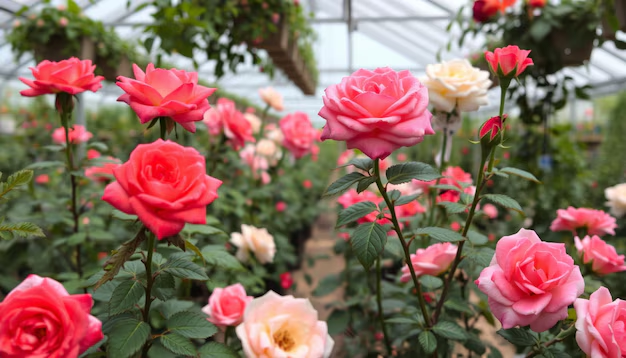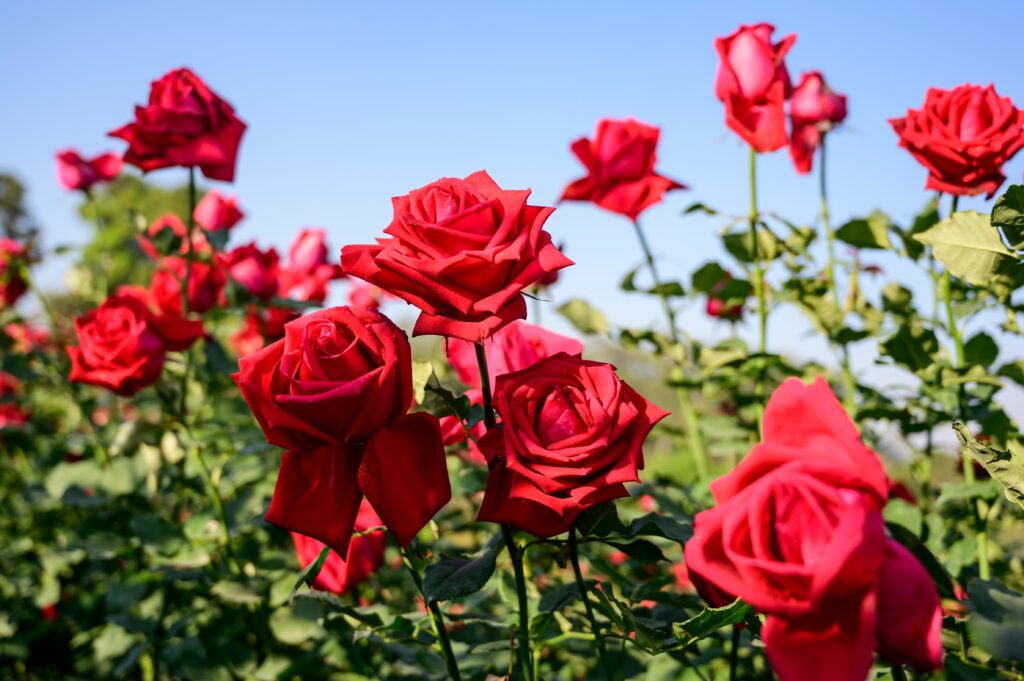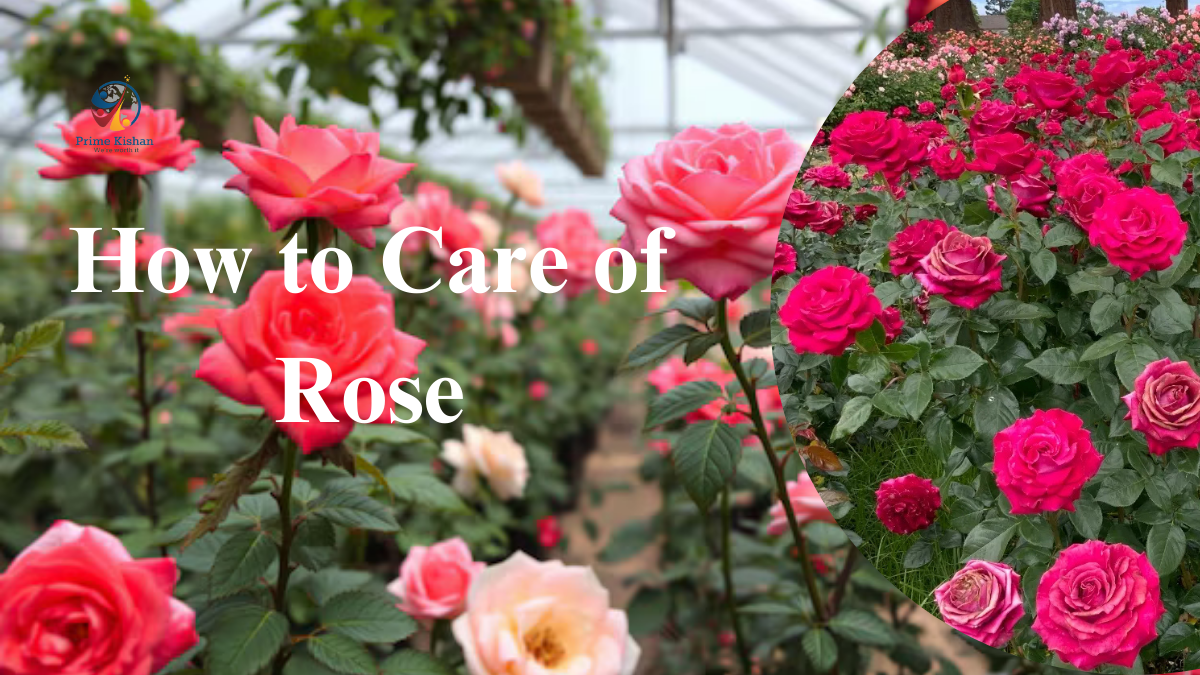Rose care Tips – Roses are one of the most beautiful and beloved flowers in gardens worldwide. Their elegant blooms and captivating fragrance make them a favorite among gardeners. However, maintaining healthy and vibrant roses requires proper care and attention. In this guide, we’ll cover all the essential aspects of rose care, from planting to pruning.
Table of Contents
1. Location
Roses thrive best in a location that receives at least 6-8 hours of direct sunlight daily. Ensure the soil is well-draining and rich in organic matter to promote healthy root growth. Avoid planting roses near large trees or shrubs that might compete for nutrients and sunlight.

2. Planting
- Timing: The best time to plant roses is during early spring or fall.
- Soil Preparation: Enrich the soil with compost or well-rotted manure to enhance fertility.
- Spacing: Maintain a gap of at least 2-3 feet between rose plants to ensure proper air circulation and reduce the risk of fungal diseases.
3. Watering
Roses need deep watering at least twice a week, especially during hot and dry weather. Avoid overhead watering, as wet leaves can encourage fungal infections. Instead, use a drip irrigation system or water at the base of the plant.

4. Fertilizing
Feed roses with a balanced fertilizer rich in nitrogen, phosphorus, and potassium. Organic options like compost tea or fish emulsion also work well. Apply fertilizer every 4-6 weeks during the growing season (spring to early fall) to support lush foliage and abundant blooms.
5. Pruning
Regular pruning helps maintain the shape of the plant and promotes healthy growth.
- Winter Pruning: Cut back roses in late winter or early spring to remove dead or weak stems.
- Deadheading: Remove spent blooms regularly to encourage continuous flowering and prevent seed formation.
- Air Circulation: Trim excess branches to improve airflow and reduce the chances of fungal diseases.

6. Pest and Disease Control
Common rose pests include aphids, spider mites, and Japanese beetles. Use natural remedies like neem oil or insecticidal soap to keep them at bay. To prevent fungal diseases like powdery mildew and black spot, ensure proper spacing, avoid overhead watering, and apply fungicides if necessary.
7. Mulching
Applying a layer of mulch around the base of roses helps retain soil moisture, regulate temperature, and suppress weeds. Use organic mulch such as bark chips, straw, or compost, and maintain a depth of 2-3 inches.
8. Winter Care
In colder climates, protect roses from harsh winter conditions by applying mulch or straw around the base. Consider using burlap or rose cones for additional insulation.
With the right care, roses will reward you with vibrant blooms and enchanting fragrances. Whether in your garden or as cut flowers in a vase, their beauty will brighten your surroundings.


